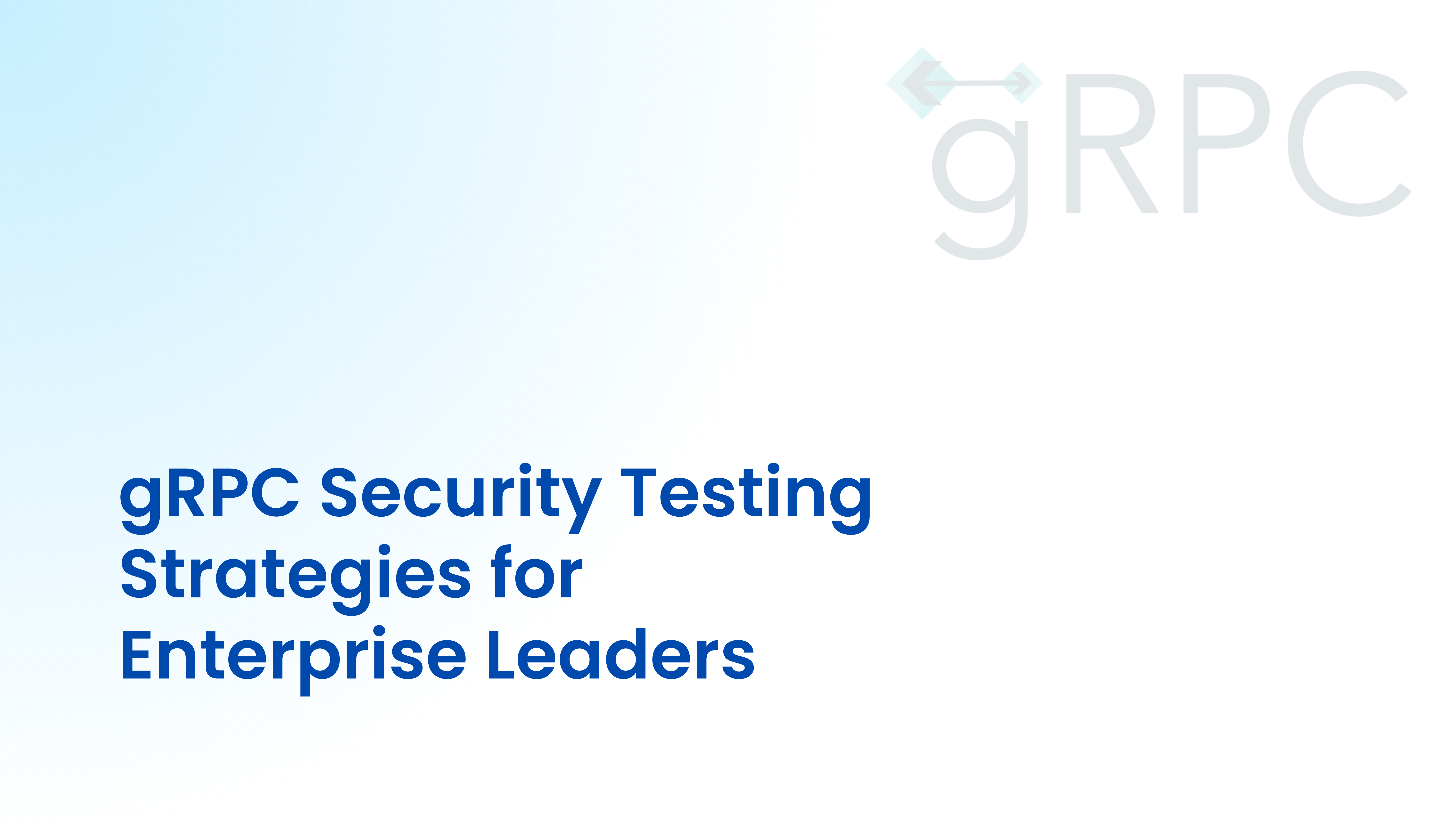APIs power more than 90% of all online interactions across industries. Every click, transaction, and automation depends on them.
Yet as organizations scale through microservices, hybrid clouds, and third party integrations, API complexity has outpaced visibility. The problem isn’t building APIs anymore, it’s knowing what’s running, where, and when it’s failing.
According to the Uptrends State of API Reliability Report (2025), average API uptime fell from 99.66% in 2024 to 99.46% in 2025, a 60% jump in downtime. Even more telling, over 60% of API incidents go undetected until users experience disruption.
In a time when milliseconds define trust, discovering API failures after customers do is unacceptable. API monitoring closes that gap by providing real time visibility into the performance, reliability, and security of every endpoint, so teams can detect, diagnose, and resolve issues before they impact users or revenue.
What is API Monitoring?
API monitoring is the real-time tracking of an API’s performance, availability, and behavior across every environment, from development to production. It gives engineers and security teams a live view of how APIs actually operate, helping them spot issues before they affect users or systems.
Modern API monitoring goes far beyond simple uptime checks. It detects latency, error rates, misconfigurations, sensitive data exposure, authentication failures, while also flagging unusual traffic or access patterns that could indicate an attack.
Traditional tools stop at response codes. Context-aware platforms like Levo.ai take it further, analyzing API behavior to uncover access control issues, data exposure risks, and sensitive data flows across REST, GraphQL, and gRPC, without ever ingesting sensitive payloads. It’s monitoring built for the complexity of today’s connected systems.
Why API Monitoring Matters?
APIs are the backbone of digital business and when they fail, everything connected to them feels the impact. A small performance drop or misconfiguration can disrupt payments, break mobile apps, or lock users out of critical systems within seconds.
Gartner’s 2024 report highlights that over 75% of enterprises faced API-related performance or security incidents last year, largely due to insufficient monitoring. Continuous API monitoring isn't nice to have, it’s essential to keeping systems resilient and users confident.
Continuous monitoring turns API management from reactive firefighting into proactive assurance, protecting business performance, compliance, and user experience in one motion.
Here’s why it matters:
- Reliability: APIs tie together core systems; even brief downtime can hit revenue and customer trust.
- Security: Detect data leaks, token misuse, and suspicious access early, before they turn into breaches.
- Compliance: Maintain audit ready logs that align with SOC 2, HIPAA, and PCI-DSS requirements.
- User Experience: Spot and resolve performance issues quickly to ensure smooth, consistent interactions.
- DevOps Efficiency: Give teams real time visibility and feedback to fix issues before they reach production.
How API Monitoring Works
API monitoring tools continuously observe live API traffic, performance metrics, and behavioral patterns to detect anomalies before they cause downtime or data exposure. They combine synthetic testing, runtime telemetry, and policy driven analysis to deliver visibility that goes far beyond uptime dashboards.
Modern platforms like Levo.ai extend this further with eBPF-powered, zero overhead monitoring that operates directly at the kernel layer. This allows every API call, internal, external, or third party to be captured and analyzed before encryption, proxy abstraction, or gateway filtering, without modifying code or adding latency.
- Continuous, Automated Governance: Levo automatically enforces governance where it matters: on APIs, in code, across CI/CD pipelines, and into production. It continuously validates live traffic against organizational security policies, ensuring standards are upheld even as teams deploy thousands of APIs.
- Real Time, Zero Overhead Monitoring: Levo’s eBPF sensor runs out of band, performing continuous API posture checks without slowing environments, introducing latency or requiring manual oversight. Security is enforced continuously, not just when scanners are run.
- Enterprise Scale Coverage: From microservices to third party integrations, Levo delivers full observability across development, staging, and production. Governance never drifts, even across multi cloud or hybrid estates.
- Built-In Misconfiguration Library: Levo ships with a production-tested library of 50+ high-impact posture checks, detecting issues such as:
- Missing security or HTTP headers
- SSL/TLS inconsistencies
- Token exposure (JWT leaks, missing expiration claims)
- Verbose error disclosures (Java, PHP, DB)
- Open cloud storage (S3, Firebase, Google Storage)
- Server fingerprinting and weak authentication
- Policy Driven Flexibility: Security teams can define custom rules in Python or YAML, tailored to specific apps, teams, or environments. This enables continuous enforcement of organization specific or regulatory policies like SOC 2, HIPAA, PCI-DSS, and OWASP API Top 10.
- Real Time Data Protection: Levo maps unencrypted PII flows, missing SSL headers, and exposure paths in real time, preventing compliance fines and reputational risk before issues escalate.
- End to End Visibility Without Friction: With policy driven observability embedded across the SDLC, Levo ensures developers, security, and compliance teams stay aligned, detecting misconfigurations early, preventing access control flaws, and maintaining consistent API governance without slowing releases.
Metrics to measure API Monitoring
In a digital economy where APIs handle over 90% of internet traffic, performance is business critical. Yet, nearly 70% of outages and breaches today are tied to poorly monitored APIs. Measuring API health isn’t about dashboards, it’s about protecting uptime, revenue, and trust. The right metrics give engineering, security, and business teams a shared language for resilience.
Here are the key metrics that matter, and what they mean for business impact:
- Uptime & Latency : For Trust: API uptime defines user experience. A 0.1% drop in uptime equals more than 8 hours of downtime per year, costing enterprises thousands in lost transactions and SLA penalties. Continuous latency tracking helps teams identify slow endpoints before users notice.
- Error Rates – For Health Check of Reliability: Monitoring 4xx and 5xx errors exposes failing integrations and logic flaws. Sustained error spikes can lead to transaction failures, broken workflows, and customer churn. Every unhandled error is a missed opportunity for reliability and reputation.
- Throughput – For Scale and Stress bearing capacity: Throughput trends show how APIs handle real world load. Sudden dips may indicate throttling or backend constraints, while unexplained surges may flag malicious activity or abuse. Stable throughput means predictable performance and capacity planning confidence.
- Response Payload & Size Trends – For Data Health: Tracking payload size helps detect version drift, serialization issues, or silent data leaks. A 20% increase in average payload size can double bandwidth costs and signal hidden inefficiencies in API design or data handling.
- Authentication & Authorization Failures – For Overall Security: A rise in invalid tokens, expired sessions, or access denials can signal brute force attacks or misconfigured identity flows. Monitoring auth metrics helps prevent privilege escalation and compliance breaches before they occur.
- Dependency Health – For Risk Evaluation: APIs rarely operate in isolation. Monitoring downstream dependencies like databases, queues, or third party services helps prevent cascading failures, a single slow dependency can degrade performance across the entire system.
By linking these metrics to business KPIs such as uptime to SLA adherence, error rate to customer satisfaction, and throughput to infrastructure cost, organizations turn monitoring from a technical activity into a strategic reliability function. Continuous API monitoring doesn’t just find problems; it quantifies impact, accelerates response, and protects the business from the cost of downtime and trust erosion.
Key Benefits of API Monitoring
In a world where over 80% of digital transactions depend on APIs (Postman State of the API Report, 2025), downtime or blind spots can cost millions. Gartner estimates that each hour of API related outage costs enterprises an average of $300,000, while performance degradations silently erode user trust and SLA compliance.
Modern API monitoring goes beyond uptime checks, it delivers real time insight, anomaly detection, and governance enforcement across every environment. The result is not just operational resilience but measurable business continuity and customer confidence.
Here are the key benefits of effective API monitoring:
- Continuous Availability: Track uptime, latency, error codes, and timeouts in real time to detect service degradation before it snowballs into an outage. Health checks and synthetic probes validate critical API journeys, while instant alerts route incidents to the right on call team.
- Real Time Anomaly Detection: Spot irregular traffic patterns such as spikes in 401/403 errors, unusual geolocation access, or abnormal payload sizes, which are early indicators of credential stuffing, token abuse, or data leaks. Behavioral baselines ensure teams distinguish real threats from normal load fluctuations.
- Reduced MTTD and MTTR: Automated alerting cuts mean time to detect (MTTD) to minutes, while contextual debugging (trace IDs, failing endpoints, last stable release) reduces mean time to resolve (MTTR) by up to 60%. Teams fix the root cause faster and prevent recurrence.
- Hidden Failure Prevention: Detect silent degradations like rising p95 latency or sporadic 5xx responses before users notice. Trend analytics highlight slow performance drift even when uptime metrics appear healthy.
- Enhanced Security Posture: Monitor authentication failures, token reuse, and access anomalies across services. Correlate these signals with endpoint sensitivity to prevent data exfiltration and privilege misuse.
- Improved Developer Productivity: Provide developers with focused, actionable telemetry instead of noisy dashboards. Pre filtered alerts and replayable traces minimize investigation time and reduce context switching.
- Data-Driven Scaling: Throughput, concurrency, and saturation metrics guide intelligent capacity planning. Data-backed autoscaling decisions prevent both over provisioning and service exhaustion.
- Compliance Readiness: Maintain immutable, audit ready logs of availability, access attempts, and configuration changes. Simplify evidence gathering for SOC 2, HIPAA, PCI-DSS, and other frameworks.
- Unified Visibility: Consolidate reliability, performance, and security insights into a single observability layer. Correlate cross service events to pinpoint the true bottleneck, whether it’s a gateway, database, or external dependency.
Effective API monitoring transforms engineering from reactive firefighting to proactive resilience management: protecting uptime, accelerating recovery, and fortifying trust at scale.
Challenges in API Monitoring
When APIs scale across clouds and microservices, visibility gaps widen. A 2025 EMA report found 68% of enterprises lack full API visibility, and 40% detect issues only after impact. The challenge isn’t data, rather it’s context.
Effective API monitoring demands contextual, low-overhead, and privacy-preserving visibility, without adding noise or risk.
Key hurdles include:
- Encrypted Blind Spots: TLS hides payload-level behavior, leaving teams to infer issues from surface metrics.
- Latency Overheads: Inline proxies and heavy agents distort performance and mask true latency.
- Alert Fatigue: Static thresholds trigger floods of false positives during traffic spikes or releases.
- Fragmented Visibility: APIs spread across clusters, gateways, and vendors emit siloed telemetry, obscuring root causes.
- Data Privacy Risks: Tools that ingest full payloads expand compliance scope and raise exposure risks for sensitive data.
How Levo Solves these Monitoring Challenges
Levo.ai redefines API monitoring by removing blind spots, noise, and performance tradeoffs that plague traditional tools. Built for scale, security, and precision, it delivers complete visibility without touching code or slowing systems down.
- Pre encryption visibility with eBPF: Levo observes API calls directly at the kernel layer, before TLS, so teams get full behavioral insight without breaking encryption or modifying apps.
- Zero added latency: Its out of path architecture captures telemetry without sitting inline, ensuring no proxy delays or distorted metrics, even under heavy load.
- High signal alerting: Levo’s intelligent baselining filters noise and enriches alerts with context, i.e. endpoint, auth, recent deploys, dependency traces, so teams can act fast and with confidence.
- End to end correlation: It connects performance, security, and dependency data across every API, helping teams trace a single failing call across gateways, services, and databases to pinpoint root causes.
- Privacy first by design: Sensitive payloads never leave your environment. Only minimal metadata is processed in Levo’s SaaS, reducing audit scope and ensuring compliance stays intact.
Levo.ai gives enterprises the clarity they need, deep visibility, zero friction, and complete control over their data.
How API Monitoring Differs from API Testing
API Testing validates functionality before deployment, checking endpoints, data integrity, and logic within controlled environments. API Monitoring, on the other hand, ensures those same APIs stay healthy and secure once live with tracking latency, uptime, and real world behavior continuously.
In short:
- Testing verifies how an API should behave.
- Monitoring confirms how it actually behaves in production.
Levo.ai bridges both, closing the loop between pre production assurance and runtime observability. Insights from live traffic automatically inform testing, ensuring every API version remains secure and reliable.
Types of API Monitoring
API monitoring combines multiple techniques to capture reliability, performance, and security from every angle. From simulating calls to analyzing live traffic and backend dependencies, each method reveals a different layer of insight into how your APIs behave in the real world.
1. Synthetic Monitoring
Simulates API requests at regular intervals to validate uptime, latency, and response accuracy, even when no real users are active. Ideal for ensuring business critical APIs like payments or authentication meet SLAs before production traffic starts.
2. Real User Monitoring (RUM)
Tracks real user interactions to reveal how APIs perform under actual load, across geographies, devices, and networks. Surfaces performance issues synthetic tests often miss.
3. Security and Behavioral Monitoring
Goes beyond performance to detect suspicious activity, failed authentications, and data exposure risks. Platforms like Levo.ai use eBPF-powered visibility to spot misconfigurations without accessing sensitive data.
4. Infrastructure Monitoring
Links API behavior to backend systems i.e. databases, caches, and external integrations, to isolate performance bottlenecks and dependency failures.
Unified Observability with Levo.ai
Levo.ai unifies all monitoring types such as synthetic, real-user, behavioral, and infrastructure, into one intelligent observability layer, delivering complete API visibility without latency or data exposure.
Best Practices for Effective API Monitoring
Effective API monitoring goes beyond tracking uptime, it’s about building resilient, secure, and insight-driven systems. With APIs evolving rapidly across cloud and microservice environments, teams need structured, adaptive monitoring practices that catch issues early and maintain user trust.
Here’s the best practices to follow for effective API Monitoring:
1. Define Clear SLOs and SLAs
Set measurable objectives for response time, uptime, and error rates. Levo.ai dynamically maps these thresholds to reduce false positives.
2. Monitor Authentication and Authorization Flows
Most API breaches stem from weak auth controls. Track token usage and privilege escalation patterns to spot misuse early.
3. Correlate Logs, Traces, and Metrics
Combine distributed traces, logs, and metrics to pinpoint root causes, whether in code, network, or infrastructure.
4. Automate Anomaly Detection
Static thresholds don’t scale. Use ML-driven anomaly detection to identify unusual trends in latency, traffic, or data flow automatically.
5. Adopt Privacy-First Monitoring
Avoid payload-level data capture. Platforms like Levo.ai monitor metadata only, maintaining visibility without exposing sensitive information.
6. Continuously Evolve Your Setup
APIs evolve fast, your monitoring must too. Regularly refine alert rules, endpoint coverage, and dependency checks to stay current.
Top API Monitoring Tools
API Monitoring Tools provide continuous visibility into API behavior, performance, and security across development, staging, and production. They detect outages, sensitive data exposure, and misconfigurations in real time, ensuring every API, from internal microservices to third party integrations, stays reliable, compliant, and aligned with enterprise governance.
API Monitoring Tool enforces resilience, compliance, and trust at scale. The right API Monitoring Tools should evolve with your architecture, integrate with your pipelines, and turn real time telemetry into a competitive advantage.
Here are the 10 most recommended API Monitoring Tools of 2025:
- Levo.ai,
- Postman,
- Datadog,
- New Relic,
- Traceable.ai,
- Akto,
- Rapid7,
- Qualys,
- Splunk, and
- Grafana Cloud.
These platforms deliver real time API monitoring, detect misconfigurations and latency anomalies, and enforce continuous governance across development, staging, and production, ensuring reliability, compliance, and operational excellence.
Why Levo.ai Is the Right API Monitoring Platform for 2025
Traditional monitoring tools were built for monoliths, not today’s dynamic, distributed systems. They rely on proxies, agents, and payload ingestion, introducing latency and compliance risk.
Levo.ai flips this model with the below features:
- eBPF Powered, Pre Encryption Visibility: Monitors traffic directly at the kernel level before TLS encryption with no agents, no code changes, no performance hit.
- Zero Data SaaS Model: Sensitive payloads never leave your environment. Only anonymized metadata is analyzed, dramatically reducing audit scope and privacy risk.
- Comprehensive, Real Time Coverage: Continuous monitoring across dev, staging, and production. Detects new endpoints, tracks auth flow changes, and flags misconfigurations before release.
- Intelligent Risk Correlation: Levo doesn’t just alert, it explains. Each issue comes with full context: impacted service, path, auth state, and probable root cause.
- Unified Observability: Brings performance, security, and compliance signals together in one pane of glass. DevOps, SecOps, and compliance teams can finally operate from shared truth.
- Low Overhead, High Scalability: Deploy in under an hour. Scale across thousands of APIs without agents, proxies, or data pipelines.
The Way Ahead: Implementing Robust API Monitoring
APIs are growing faster than most teams can monitor. Every new integration adds unseen dependencies and potential failure points. In this landscape, monitoring isn’t optional, it’s the backbone of reliability and trust.
Legacy uptime checks only scratch the surface. True observability means knowing why an API fails, who it impacts, and how to fix it, before users notice.
That’s the promise of Levo.ai. By combining kernel level telemetry, behavioral analytics, and zero data design, it helps organizations move from reactive firefighting to proactive assurance.
Whether you’re scaling SaaS, managing fintech systems, or protecting healthcare APIs, Levo.ai delivers the visibility and confidence modern teams need.
Monitor continuously. Correlate intelligently. Protect confidently. That’s how Levo.ai defines the next generation of API observability.
Monitor APIs in Real Time with Levo. Book your Demo today to implement API security seamlessly.


%20(1).png)




